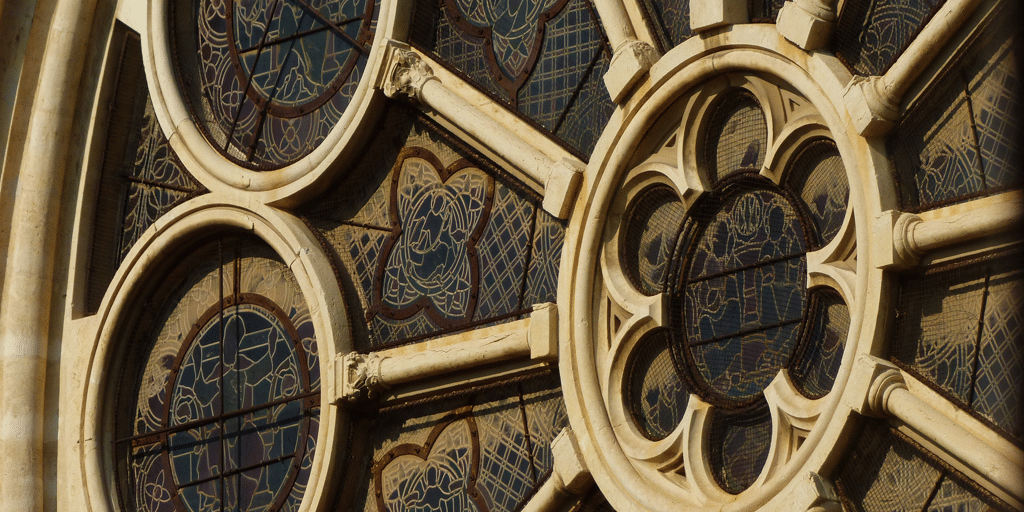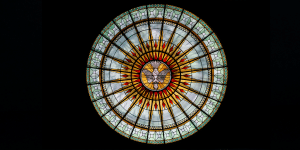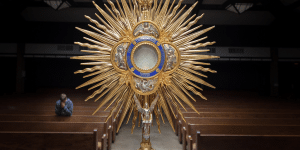Response to the Lost Tomb of Jesus/Program 4

| By: Dr. Darrell Bock; ©2007 |
| There are so many conflicting theories about who Jesus really was, how can we sort through all the information and arrive at a conclusion? |
Contents
Introduction
On Sunday, March 4, 2007, a television special entitled The Lost Tomb of Jesus aired nationwide on the Discovery Channel. Those who produced the special argued that ten small bone boxes, called ossuaries, that were discovered in 1980 in the Jerusalem suburb of Talpiot supposedly held the remains of Jesus of Nazareth and his family members. This assumption was based on the six names found in the tomb, including: Jesus, son of Joseph, who supposedly refers to Jesus of Nazareth; Maria, supposedly Jesus’ mother Mary; Matya, or Matthew, although not a family member of Jesus, supposedly a relative of Mary; Mariamne e Mara which supposedly refers to Mary Magdalene who supposedly was married to Jesus; Yehuda or Judas, son of Jesus, who, although not mentioned in the New Testament, is supposedly the son of Jesus and Mary Magdalene; and Yose who supposedly refers to one of Jesus’ brothers, Joses.
The assertion that the odds are 600 to one that the Talpiot tomb is the tomb of Jesus rests on the assumptions that the people named in this tomb are the family members of Jesus. But scholars say there is a problem with attributing any of these names to Jesus’ family. First, the name Jesus is far from certain. Some scholars think it is a totally different name. If the first name is not Yeshua or Jesus, then this whole new radical theory collapses. Second, there is no indication that the Mary mentioned is Jesus’ mother. Third, Matthew is not part of Jesus family. Fourth, there is no evidence that Mariamene e Mara refers to Mary Magdalene. Fifth, there is no mention in the New Testament that Jesus was married to Mary Magdalene or anyone else. Six, there’s no mention in the New Testament that Jesus had a son. Seventh, if you were Jesus of Nazareth, would you really name your son Judas? Eighth, Yose should be vocalized Josah, who then could not be Jesus’ brother mentioned in Mark 6:3, and Mark 15:40. Ninth, the so-called James ossuary, which was assumed to have come from the Talpiot tomb, was photographed and in circulation in the 1970s, before the Talpiot tomb was ever discovered.
But there is even more evidence that shows the Talpiot tomb is not the real tomb of Jesus of Nazareth. To share that evidence with us, our guest today is Dr. Darrell Bock, Research Professor of New Testament Studies at Dallas Theological Seminary. He is one of the leading New Testament scholars in the world and was asked by Ted Koppel to be one of the guest scholars to critique the Discovery Channel special after it aired. We invite you to join us today on the John Ankerberg Show and learn why the family tomb of Jesus is a story full of major holes, false assumptions and false facts.
- Ankerberg: There is something that is hard for Christians to get out of that’s going on here. And that is, the people that are doing these books and doing the specials that are criticizing Jesus, or reshaping Jesus, or Dethroning Jesus, as your new book that’s coming out is saying, the fact is that they know that there is a host of Americans that revere and believe in Jesus as Lord and Savior. So they know if they come out with a special, people are going to tune in to see about their Lord. They are going to buy the book; because if it threatens their faith, they say, that I’ve got to buy the book, I’ve got to look at this, I’ve got to investigate this, because I have to know my faith is based on credible information, okay? So the Christian is trapped into supporting the very efforts of this thing by looking at the special and being informed about the topic. Is there any way for us to get out of that?
- Bock: Well, I think there are two ways to look at it. I’m not sure there is a good way to get out of it in the sense of, Christians have to be prepared to give a defense for the hope that is in them. The way I look at it is this is that every time that this comes on the radar screen, there is a fresh opportunity to talk with your neighbor about who Jesus is. You know, you can take the cup out of the water cooler and during the break, hey, let’s talk about this Jesus and who He really is.
- The problem is that what you are getting is a cacophony of Jesuses. I mean you could literally, I bet we could now, on the basis of the portraits that we have, create a Metropolitan Museum of Art of Jesus and have a different room representing a different kind of Jesus for all the different Jesuses that are being put before us.
- But that gives the Christian the opportunity to talk about this is the unique Jesus; this is Jesus as He really is, and we know this because only this Jesus could generate the history that we know about coming out of the first century. It’s the most credible portrait of what generated the Christian movement. And so from that standpoint it seems to me that, yes, there’s a trap at one sense, but it also is an opportunity. And I prefer to view it on the opportunity side of the ledger versus the trap side. Because I do think that it has given us an opportunity and an excuse to talk very easily about Jesus, whereas 15 or 20 years ago if you brought up Jesus people would go, “Oh, no, that’s private. Don’t go there.” So we are actually in a much better position as a result of some of this.
- Ankerberg: Yeah. Roll through the chapters in your book that we are going to do in a few months of time, that show how fast paced the new radical theories are that are coming out about Jesus. I mean, it only goes back about a year and a half, isn’t it?
- Bock: Well, it’s a little more than that. But we basically, what we are doing in this next book, I am writing it with Dan Wallace. It’s called Dethroning Jesus: A Look at the Public Claims about the Christ. And we have isolated six claims in the last five years, all of which have made the New York Times best seller list; claims about Jesus, all of which we think are false. And they don’t all fit together.
- But they are: 1) we can’t know what our New Testament really said; 2) The Gospel of Thomas gives us the real Jesus; 3) The Gospel of Judas shows us that there were alternative Christianities; 4) the Jesus who preached was really a political Jesus not a spiritual Jesus; 5) Paul hijacked Christianity from the original Jewish movement that Jesus passed on to James; and then last but not least, 6) we’ve got Jesus’ bones, so we just ought to shut up shop and head somewhere else.
- So those are the six claims that we are going to look at and we are going to analyze them one at a time. The common thread that is running through all of them is an attempt not to eliminate Jesus but to neuter Him. And by neutering Him, turn Him into just another great religious figure. Our culture will embrace that kind of a Jesus pretty easily. But that’s a problem for Christians, because Christians and Christianity is claiming that Jesus is unique. So Christians have to be on their toes when it comes to this.
- Ankerberg: Alright, and on the heels of all of that, we’ve got another one by Elaine Pagels and Karen King, Reading Judas. And this takes it from the Gnostic slant of explaining what the Gnostics believed about Judas. And Christians might say, “Who cares about what the Gnostics believed?” What’s going on in this book?
- Bock: Well, that’s a book that is attempting to argue that from the very beginning there were alternative views of Christianity; that there were different reactions to Jesus. Now, in one sense they are again right. There were different reactions to Jesus. Some embraced Him and His message and some rejected His message, there is no doubt about that. But this book is interesting in that it claims that there were certain people claiming to be Christian, who rejected the message of the physical resurrection, who rejected the idea that Jesus died for sins on the cross; and put it in a Greco-Roman form; this Gnosticism which we have talked about on several shows, this dualism that says that spiritual ideas are good and matter is evil. And they are explaining how that happened. And they are leaving the suggestion that this goes back to the earliest days of Christianity when in fact all The Gospel of Judas does is tell you what that discussion was in the second century.
- Ankerberg: Yeah, and I’m saying again this alternative view, or alternative idea of Jesus, to say you have a Christian Gnostic is a contradiction in terms because the Gnostic part contradicts the Christian part.
- Bock: Yeah, it not only contradicts the Christian part, it contradicts the Jewish part out of which Christianity came. It is an anti-Jewish text. It says that the God of Israel or the top God is not the creator God, an underling god is – sometimes it’s divine feminine – and they botch the creation. The creation is entirely irredeemable. What really matters is the spiritual side inside of you and coming to discover that you are ultimately a spiritual being and that the world of matter doesn’t matter.
- Well, in Christian circles and in Jewish circles the entire creation is sacred to God. The matter is sacred just as the spirit is sacred. You know, the whole thing that we get into about the environment is based on the premise that it matters what we do with God’s creation. We have a responsibility to be sensitive to it. So in that sense this represents a distortion of the Christian message. And actually when you read this book carefully and think about it, you understand why it is that The Gospel of Judas could never have been an original expression of Christianity, because it is so divergent from what Christianity came out of.
- Ankerberg: Alright, if university students are going to be reading this book, okay, how would you describe to them what they are advocating in this book? Why do you need to know this information? What will it do for you? Why is it important?
- Bock: Well, the book’s value is that it does tell you what this alternative movement was doing in the second century, and kind of what the debate became around what the church was preaching and teaching; and the reaction against it. And from that standpoint it is a very helpful book in showing you what the debate is about God in the second century. Just like this show is trying to help you with the twenty-first. But the negative part of it is the implication that is left; and that is this debate was going on all along and really no one had the claim of orthodoxy. Orthodoxy is something that came along later and then it anachronistically imposed its authority back on the earlier period. That’s just flat wrong. It’s a distortion of history. And it is a distortion of the history of early Christianity. And as such it’s an attempt, again, to take Christ out of Christianity and to turn Christianity into just one belief about how man relates to God and the divine, and how he is supposed to relate to others at a basically ethical level.
- Ankerberg: Yeah, I think we have got to drive this point in, that when the gospels were written, if Jesus died at 30 AD and the Gospels came out before 100, and some going back to 50, 60, 70, the fact is there was no competition for the gospels. There were no Gnostic texts when the gospels came out. They were the thing, okay? And then the first Gnostic texts came into the early part of the second century. For example, The Gospel of Judas that we have been talking about, came at what, 180?
- Bock: Yeah it’s a second century, probably a late second century text.
- Ankerberg: And the first one was probably what, Gospel of Thomas?
- Bock: Gospel of Thomas about 120, maybe slightly a little earlier with tradition. What makes Thomas interesting is, and I’ve got to say this, what makes Thomas interesting is it’s a mixture. It’s drawing on some stuff that the orthodox church was using, and then it’s bringing in alongside other stuff that’s coming outside that sphere and mixing them together. It’s a hybrid gospel.
- Ankerberg: Yeah, like Jesus is actually risen from the dead in Thomas.
- Bock: Yeah.
- Ankerberg: Okay. Talk about that fact of what they are trying to do by taking the Gnostic books and pushing them as far early as they can, far back early as they can; and why are they trying to take the gospel books that were written between the 50s and 90s basically and trying to push those further back? What are they trying to do?
- Bock: What they are trying to do with the Gnostic materials is get them as early as they can so they can have this alternative in place as early as possible.
- Ankerberg: Equal.
- Bock: Equal to, getting to the point where it is equal to what’s going on with what we know as the biblical gospels. What they are doing with the biblical gospels, is they can only push them out so far. The nature of our evidence is such they can only go so far with that.
- But what they are trying to do is to sever the connection between those gospels and the earliest disciples. So you will often hear statements like, “The four gospels don’t come from apostles or anyone close to the apostles.” To which my reply is, “No, the four gospels come from apostles or from people close to the apostles.”
- The example I like to use here is Luke, because Luke is interesting. He is described in Luke/Acts as a companion of Paul. Now, just put on your thinking cap for a second and ask, “How many companions of Paul are named for us in the New Testament?” You’ve got Silas, you’ve got Timothy, you’ve got Titus, you’ve got Epaphroditis, You’ve got Apollos. I mean the list is long. Barnabas. And yet the tradition is unanimous that Luke is the one who wrote the third gospel. So you ask yourself, if you didn’t know who the writer was, and even more than that, Luke is a somewhat obscure figure among those: there are more prominent figures among those characters. So if you are trying to fill in the blank because you didn’t know it, would you fill in a blank and have it be so unanimous? No, something’s got to drive the unanimity of that tradition. And my claim would be that what’s driving the unanimity of that tradition is they know who wrote it.
- Ankerberg: Not only that but you have actual manuscripts in the 90s to 120s of the disciples of the disciples, the apostles, that actually said, “Hey, I know he wrote it.”
- Bock: Well, you’ve got what you have, we think we have is in the naming of the way this is laid out. We don’t get the gospel of Luke. We get the gospel according to Luke. In other words we get one gospel message and one of them is according to Matthew, one of them is according to Mark, and one of them is according to Luke, and one of them is according to John.
- Anyway we get this “according to”. There is one gospel in four different versions. And we think that those names were in place in the early second century.
- Ankerberg: Alright, so let me ask you this. What’s going on with this constant depiction of Jesus in a new way? What do you think is behind all of these different depictions?
- Bock: Well, the goal is to reshape, refashion, re-vision Christianity. What actually is going on is that we are getting a post-fabricated Jesus. And the point is that we are getting a Jesus who is not the real Jesus. He is being fabricated and He is being fabricated according to ideological and theological concerns that reshape Christianity. The one thing you are not getting in those reshaping, ever, is an orthodox Christianity. You are always getting something that neuters or limits Jesus and makes Him into another great religious figure.
- Ankerberg: Also, it’s distorting the facts.
- Bock: It distorts the facts of the Scripture. Now, of course, part of the debate that is important here, part of the debate here is that people are questioning what’s going on in the Scripture. But once you start to do that and kind of deconstruct the Jesus of the gospels, then you can make Jesus into anything you want.
- But the problem is, what’s the basis for doing that? On what basis are you going to do that? Are you going to do it on the basis of a 21st century reconstruction? Or are you going to go to these extra biblical gospels?
- What’s really strange is you go to these extra biblical gospels which scholars almost unanimously recognize don’t go back to the original Jesus, and yet we are going to construct a Jesus on the basis of these texts? They have even less credibility than the gospel materials that we are working with. So why would you every think about doing that? So there are just multiple problem with the way the material is handled.
- It does mean this for Christians though; this is very, very important. It used to be that the way in which you could engage in this discussion is to know what was going on in the Bible. Now you are in a situation where you have to know also what is going on around the Bible and with the Bible, because the Bible itself to a great degree is becoming a very major part of the question.
- Ankerberg: Thanks for taking us through this information. I mean we have done it fast but I think that we have given them the kernel of what the folks need to know out in our audience. And one final thing, what encouragement would you give Christians who are having this constant barrage come their way?
- Bock: Well, I think once you start to realize that this pattern is happening and you actually look to see at the different takes and angles that are being taken to try and chip away Christianity, a switch ought to go off in your head and go, “Well, those all can’t be right. Something else is going on here.” And so, take three deep breaths and realize that what’s happening here is that when you take the Bible and the biblical portrait of Jesus out of the story, you have removed the central material that Christianity has always affirmed about that. And when you do that, you open up the discussion to go anywhere. But in the process you have lost your moorings in history. And so whatever that is, as fun as it is to talk about for some people, and how some people like the controversy and the hype that comes with it, it’s not the real Jesus.
- Ankerberg: Darrell, again, thanks for being with us and sharing about The Lost Tomb of Jesus as well as these books on Judas.
- Bock: Pleasure.








